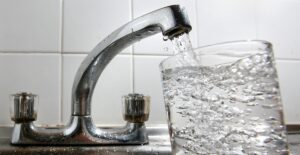How Does RO Water Purifier Work?
Water is an indispensable aspect of our life. But what if the water is not safe and reliable for consumption anymore? Do you know the number of impurities and pathogens your water can contain?
No matter how clean the source of water is, it has some impurities and particulate matter, as well as unseen microbes and disease-causing pathogens, present and dissolved within.
Especially when water forms the basis of our life, this can be dangerous for people who have compromised immunity including old aged people and small children as well as people suffering from sensitive digestive disorders or a chronic health condition.
The unknown minerals and microorganisms in water these days can deteriorate our overall health and quality of life. Water is needed for most activities mainly, ingestion, for digestion, for metabolic activities as well as for cooking food. Therefore, the water that we use must remain pure and filtered.
The best method is to invest in an RO water purifier. It has a complex mechanism for filtering the water but you can be rest assured that you and your family are consuming healthy water. Check our reviews on the best RO water purifiers for home use, While there are various water purifier brands in the market as well as online that boast of having RO purifiers along with added UV and mineral filters, what exactly is the mechanism of the RO filter?
We are here to help you understand and make the right choice for your health and your family’s life.
What is the Mechanism of Reverse Osmosis?
As the name suggests, Reverse Osmosis is the exact opposite of normal osmosis.
In normal osmosis, the water or any fluid naturally moves from an area of high-water potential to an area of low water potential.
What drives the solvent or fluid to the area of low water potential?
It is the reduction of free energy of the system when the difference in either of the sides is reduced. This generates a force that drives the solvent towards the membrane having higher solute concentration or low water potential to balance the concentration of both the membrane sides.
The exact opposite happens in reverse osmosis but an external force has to be applied to carry out reverse osmosis because this is not the regular flow direction of the water.
Reverse osmosis involves solvent diffusion in which the filter or membrane through which the solvent passes has a pore size of a few micrometres or nanometres that catches hold of the tiniest particles present in water while the water molecules can easily pass across the membrane.
Apart from water filters, this mechanism also holds applications in laboratories to expel salt and mineral particles from water.
How Does RO Water Purifier Work?
In water purifiers, the RO membranes are a selective membrane that allows the flow of water molecules whereas the other solids beyond the membrane size get captured by the RO filter.
The process is called reverse osmosis because the pressure is applied on the reverse side which contradicts the regular osmotic flow of water. The pressure can be applied using a pump that runs on electricity or if the normal water flow has enough pressure to pass through.
There are various components involved in the proper functioning of the RO filter and the proper filtration process of water. Read the steps below to know further:
Prefilter:
If you want the RO membrane to last longer and work efficiently in removing the finest of impurities, you may need to install a prefilter. This is a very basic filter that removes most impurities like mud, stones, pellets, and other basic sediments that mix up with the water.
This will require replacement around once in 2 months depending upon the water supply and the dirt levels in your regular water supply.
RO membrane:
The water then passes through the RO membrane which uses the reverse osmosis principle as explained above to remove most impurities. This membrane needs to be enclosed in a housing to ensure it remains protected within and the RO membrane needs to be replaced in 8-12 months depending upon the quality of water in your locality.
The membrane is capable of removing suspended solids, viruses, minerals, bacteria, and other related impurities. This filter is capable of making the water very clean and therefore forms an essential aspect of most water purifiers these days.
UV filter:
The UV filter comes with a UV light that is capable of killing most viruses and bacterial cells. Once the water has passed through the RO membrane, it passes through the UV filter to kill the pathogens that pass through the minute pores of a RO membrane as well.
UV filter makes sure that the water is free of any harmful pathogenic bacteria that can cause dangerous diseases and is not safe for children and those with compromised immunity.
Mineral Cartridge
The one disadvantage of having an RO membrane is that it can tend to remove useful minerals like copper, zinc, sodium, potassium, calcium, etc that are present in water and needed for our body. They increase our immunity, help in bone development, and are essential for maintaining an osmotic balance.
Therefore, you can add a mineral cartridge which imparts these essential elements in the water once the filtration procedure is carried out to ensure you and your family do not miss out on these minerals.
Pro Tip: The RO filters come with a TDS meter. Make sure to not adjust the TDS level to a total zero else you may end up eliminating most useful minerals from the purifier as they may get filtered easily through the RO membrane.
Additionally, you can also add an ultrafiltration filter for better efficiency of the filtration of your RO purifier.
Benefits of RO Water Purifier
It is capable of filtering out toxins like lead, mercury, arsenic, chloride, etc, the deposition of which can cause deadly and genetic disorders. The accumulation and toxification due to these minerals can also cause allergies.
RO water filters use less energy as compared to other water purifiers hence they are energy-saving and cost-effective.
It improves the taste of water.
Regular maintenance helps in dispensing clean and safe water at all times. The maintenance is hassle-free.
Final Note
It is important to consume safe and healthy water for our maintenance and our family’s safety. Therefore, our article will help you understand the importance and working of a RO water purifier so you can provide clean and safe water to your family for consumption and maintenance.







